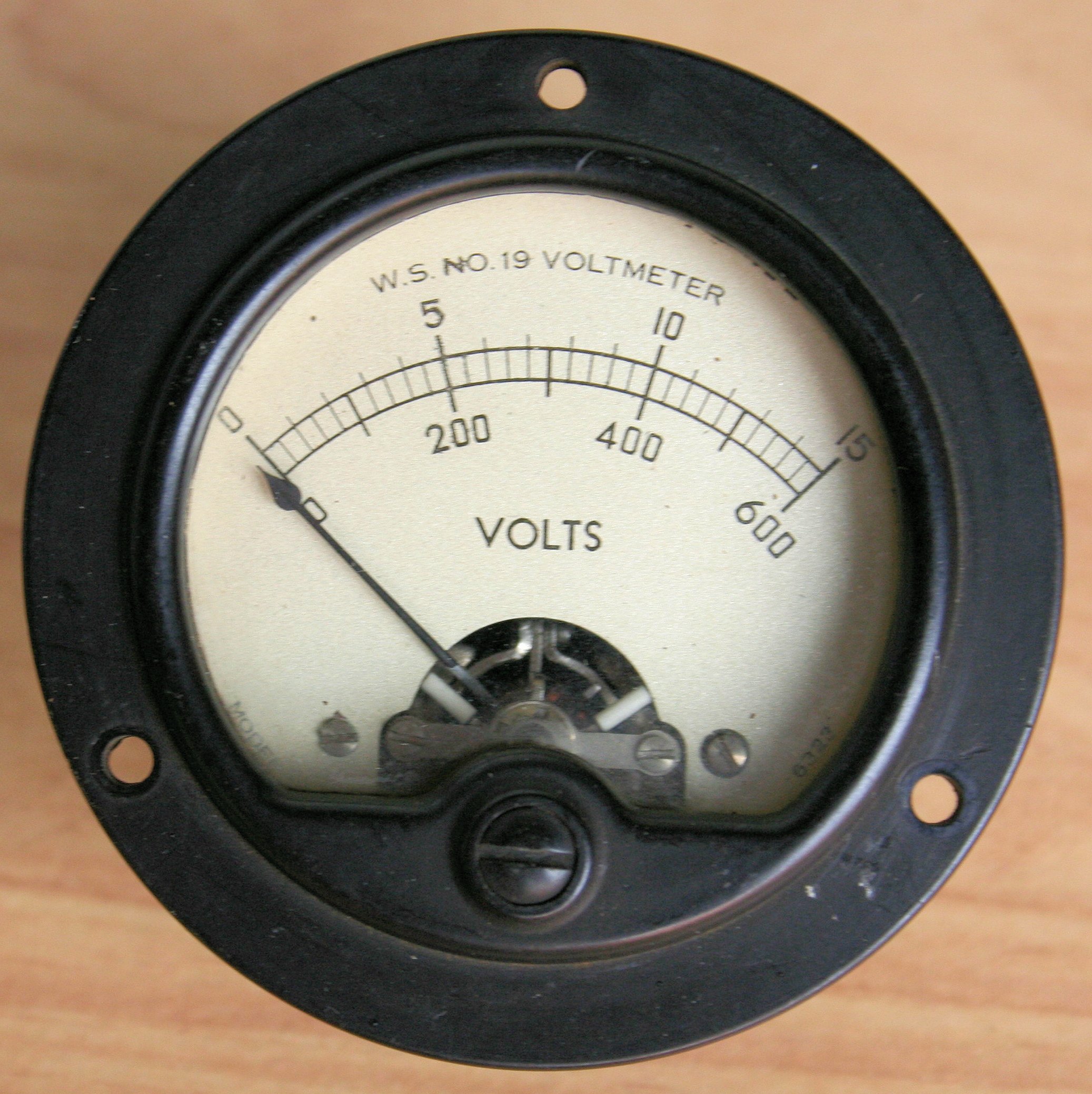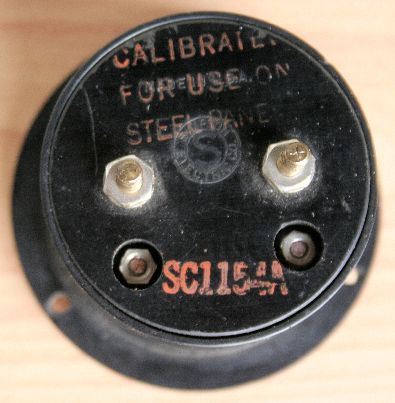While working on the restore of various WS19s, one notices the various types of meters that have been used. Not a surprise if one realizes that so many factories built these sets and the demand for parts must have been enormous. Meters were often not built by the radio factories but by specialized companies, like Simpson, Weston, Triplett and many more.
Supplemental information on meters and indications was kindly supplied by Chris Suslowicz, G8KGS.
For those of you who need physical sizes of the meters, I made a PDF-file, to download. You’re welcome.

One thing all WS19 meters have in common: they carry on the scale the text: “W.S. No. 19 VOLTMETER”
The scale reads 15 Volt and 600 volt.
Indications on the scale:
0.5 M.A.F.S. – 0,5 milli Amps Full Scale
USE EXT. RES. – use external resistor for shunting purposes
moving coil – the magnetic system
F.G.X.4 – is something related to the accuracy/calibration
1942 – obvious
No. F – type number of the meter
W.S. No. 19 VOLTMETER – obvious
RES.= 500 Ohm – internal resistance of the meter

Component number: ZA3155/84
Serial number: 459079
This type of meter is seen in British builds. It was attached to the front with a clamping ring. A sort of seal can be seen attached to the bezel.

This meter was made by Weston.
Model: 506
It was mounted using a clamping ring.


This model carries no further information, except for the factory logo on the back: Simpson. It was the common type on most Canadian built WS19s.

The stamp says: “CALIBRATED FOR USE ON STEEL PANEL”.
And the type number: SC1154A.

This is a very good looking WS 62 Voltmeter.
The silver scale reads 15 Volt and 600 volt and shows the Broad Arrow. It is mounted by means of a clamping ring.
Indications on the scale:
0.5 mA. F.S. – 0,5 milli Amps Full Scale
USE EXT. RES. – use external resistor for shunting purposes
F.Ltd – the factory that built it: Ferranti Ltd.
ZA25649 – the part catalogue number
moving coil – the magnetic system
F.G.X.4 – is something related to the accuracy/calibration
1945 – obvious (The WS62 was built at the end of 1945 and first deployed as Allied troops were already fighting in Germany)
(B) – factory sign?
No. F – type number of the meter
M.T. No.4T – not a clue – Magnet Type?
VOLTMETER – obvious
RES.= 500 Ohm – internal resistance of the meter
7TA – not a clue

Serial number: 11601
Information, coming from Chris:
“B.S. 89 was the British Standard for “Indicating Ammeters, Voltmeters, etc.” and the accuracy grades (marked on the scale) during WW2 were “S.S” for Sub-Standard (i.e. calibrated directly against a “standard” ammeter and used for laboratory work), “F.G.” for First Grade, and “S.G.” for Second Grade.[1]
(Second Grade was fairly horrible and eventually disappeared.)
Post-WW2 the names changed, and “SS” (Sub-Standard) became “Pr” (Precision), while “F.G.” became “In” (Industrial).
I’m not sure what the “X4″ meant, but probably a relaxation of the actual error limits due to the needs of wartime production. There were other suffix letters used, such as ‘M’ or ‘G’ for Metal or Glass bearings used due to the shortage of jewels for the pivots.”
Thanks, Chris.
